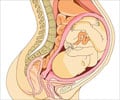
‘Abortion rates continued to decrease after the abortion pill named mifepristone is available as a normal prescription.’
Tweet it Now
An analysis showed no increase in abortion-related health complications following the removal of restrictions on mifepristone, which is considered the "gold standard" drug for medical abortion globally.“Complications were already very rare, and we found that abortion continued to be safe and effective when mifepristone was prescribed without restrictions,” said Dr. Laura Schummers, the study’s lead author.
“This is the strongest evidence yet that it is safe to provide the abortion pill like most other prescriptions—meaning any doctor or nurse practitioner can prescribe, any pharmacist can dispense, and patients can take the pills if, when and where they choose.”
The previous rules included a requirement that physicians observe patients taking the medication.
The drug could only be dispensed to patients by specially trained physicians who are registered with the manufacturer, and not by pharmacists.
Advertisement
“Our study is a signal to other countries that restrictions are not necessary to ensure patient safety,” says Professor Wendy Norman, the study’s senior author and professor in UBC’s department of family practice.
Advertisement
The uptake of medical abortion, rather than surgical, was rapid following the change in policy. Before mifepristone became available, 2.2 per cent of abortions were provided using medication. That percentage increased to 31.4 per cent 2 years after the drug became available as a normal prescription.
The overall abortion rate found to decline after restrictions were removed, decreasing from 11.9 to 11.3 abortions per 1,000 female residents aged 15–49 years.
“We saw that patients and their health care providers rapidly began choosing medical abortion, which can sometimes be preferred over surgical methods by offering care closer to home and earlier in pregnancy,” said study co-author Dr. Sheila Dunn, scientist and family physician at Women’s College Hospital in Toronto.
“As other studies have shown, making abortion more accessible does not increase the number of people seeking abortion. We found that abortion rates continued to decrease after mifepristone’s availability as a normal prescription.”
By linking and analyzing government health data on a secure data platform at ICES, a research institute in Ontario, the researchers produced a complete picture of abortion health outcomes that they say provides the best data available on abortion safety.
“We were able to complete a robust safety profile for the entire province by linking together health records from all practitioner visits, hospital visits and outpatient prescriptions,” said co-author Dr. Elizabeth Darling, assistant dean of midwifery and associate professor at McMaster University, and an ICES scientist.
“This paints the most comprehensive picture of abortion safety to date, capturing any setting where a complication would present. It demonstrates very clearly that restrictions on the abortion pill are not necessary for safety.”
Source-Medindia











